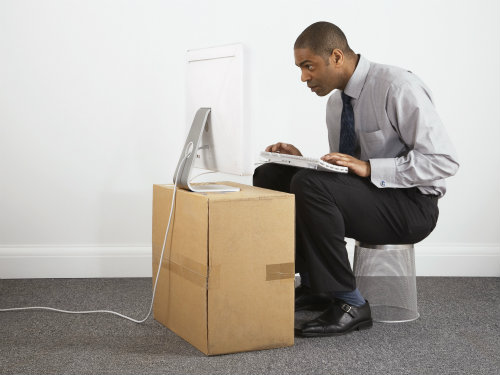Is Hot Desking Too Good to Be True? Aug 14, 2019

The first wave of hot desking arrived to great acclaim and disappeared in a puff of criticism – but now that the dust has settled, we can have an objective look at whether the hot desk naysayers have thrown the baby out with the bathwater.
If you blinked and missed it, hot desking is a system of office organisation where desks aren’t assigned to a particular employee – rather, a workspace is designed to be used as needed, by whoever needs it. Staff can move desks on a rotation system, or based on current project requirements – or they can simply choose where to sit when they get in.
The key benefit is cost saving – one workstation per employee means a dedicated computer, phone and internet, desk and chair, as well as the floorspace the desk requires. While it might seem like all your workstations are occupied all the time, spend a week documenting your company’s workstation use – between part-time workers, and staff taking personal leave and annual leave, attending meetings, travelling for work and working from home, you may be surprised by the amount of time desks are vacant. A Jones Lang Le Salle study revealed that 40% of a company’s staff are not in the building on any given day.
For some companies, a move to hot desking could allow the extra office space to be used for meeting or break out spaces – or it could allow your company to downsize, saving in rent and overheads.
As well as making good financial sense, there are plenty of other benefits for your staff:
· Increased interaction – Working alongside people from another area can help improve inter-departmental communications and allow for unplanned synergies. Suddenly the marketing team has discovered that the HR team has a solution to their problem, or accounts has an idea for streamlining admin’s workflow. And even better – the more each department knows about what their colleagues are up to, the fewer meetings there’ll be to schedule.
- Tidiness – Everyone has different standards as to how they like to keep their workspace. But hot desking requires colleagues to clear their desk at the end of the day – documents, mugs, notebooks can all be stowed away in staff lockers, leaving the office looking clutter-free.
- Team building (naturally) – Team integration activities can have a mixed success rate, but changing up who sits where can have the additional benefit of staff getting to know people outside of their own departments better – no mini-golf outings or trust exercises necessary.
- Getting your tech up-to-date – If getting remote access set up has always seemed like too huge of a project, moving to hot desking gives your company no choice. Employees need to be able to access everything from everywhere – payroll, documents, resources, databases.
Take the opportunity to make the transition once and for all and become the digital office you always dreamed of.
Hot desking can make sense for many companies, helping with cost saving, team cohesion and a reinvigorated office space.
If you’d like to know more about how SBA Business Process Outsourcing can help you in that transition, through digitising your systems or just picking up extra admin tasks while your team adjusts to the new set up, please get in touch.
References:
http://gmp.jll.com/Documents/research/pdf/Flexible-Space-2017.pdf
